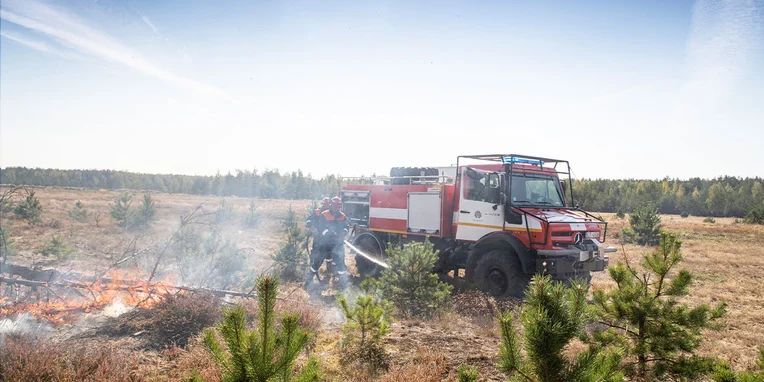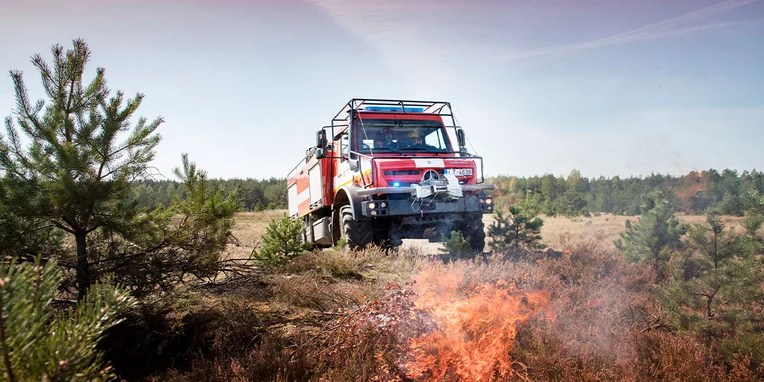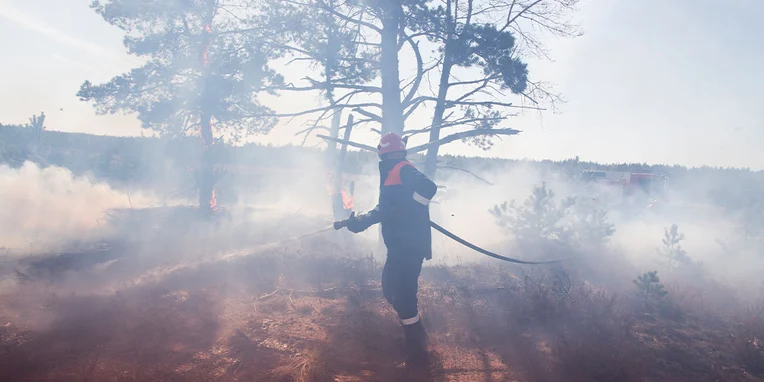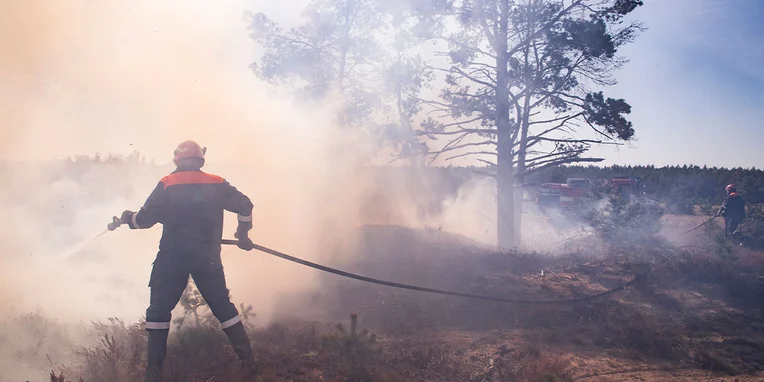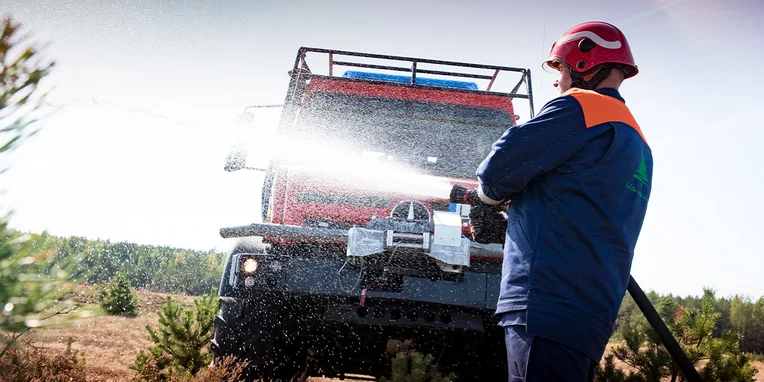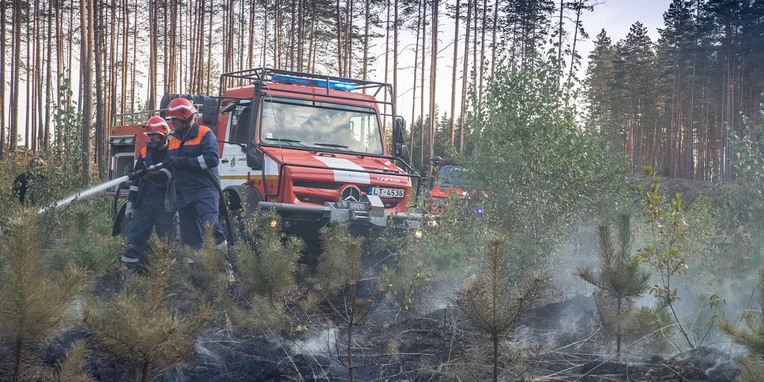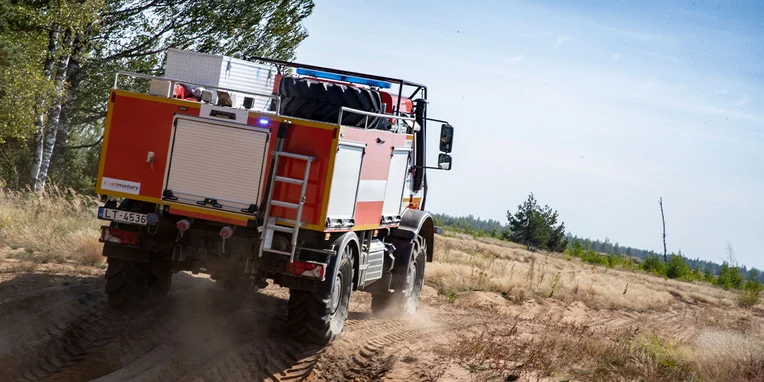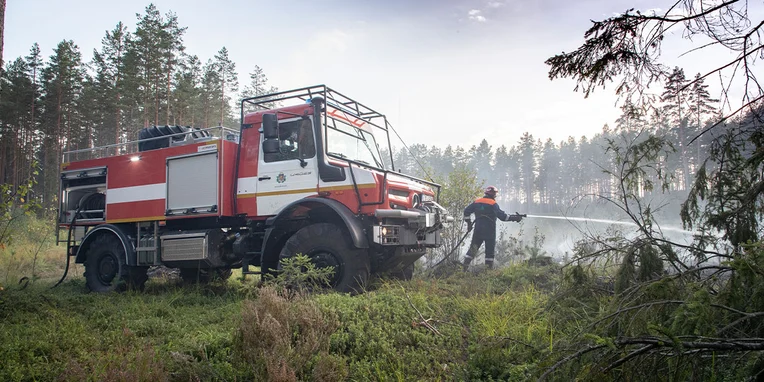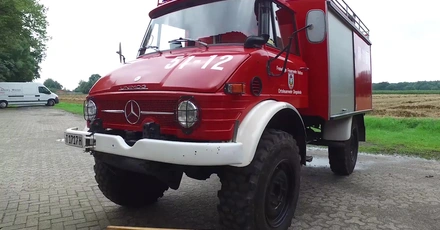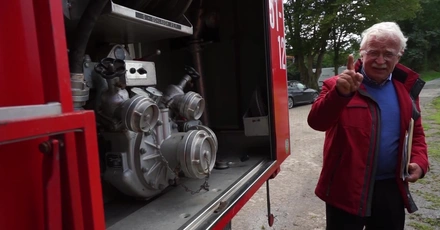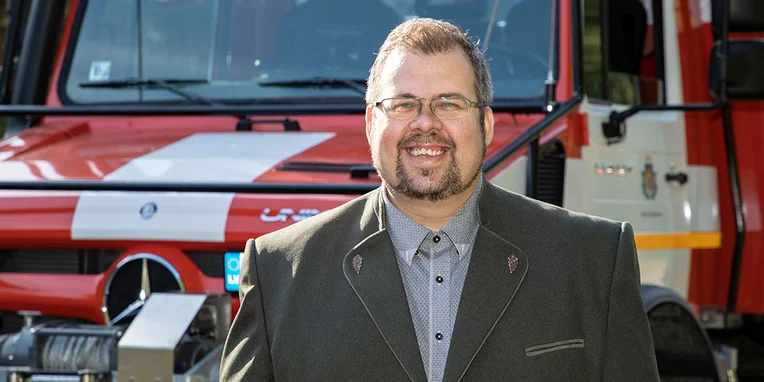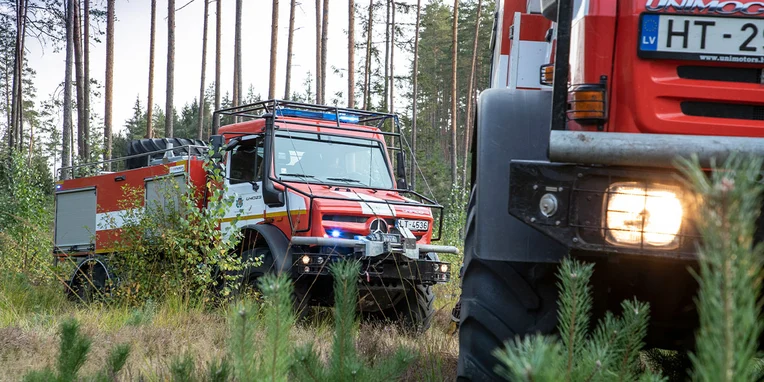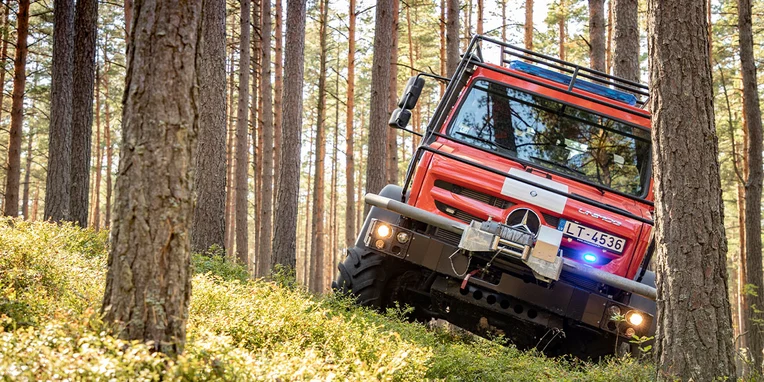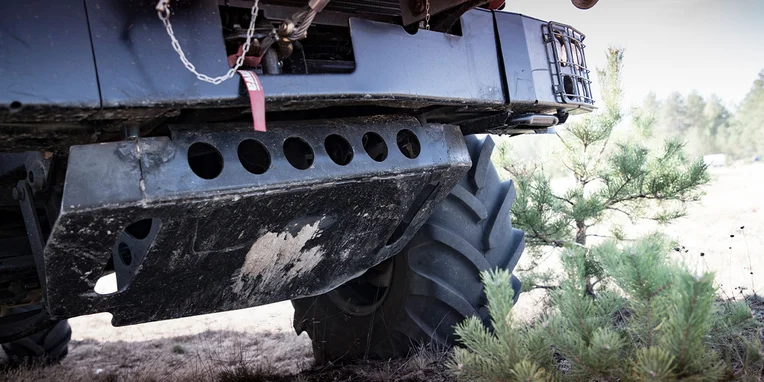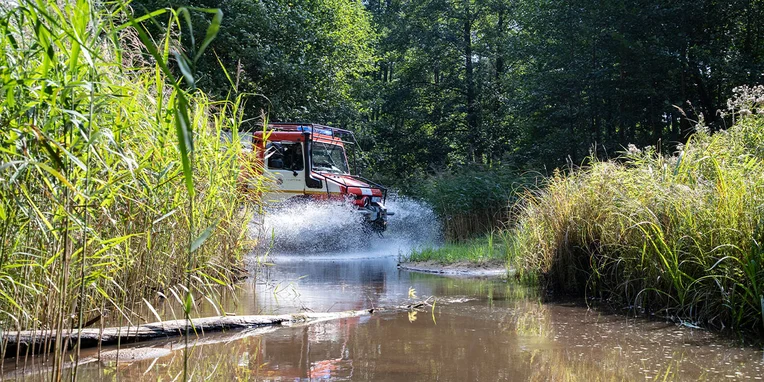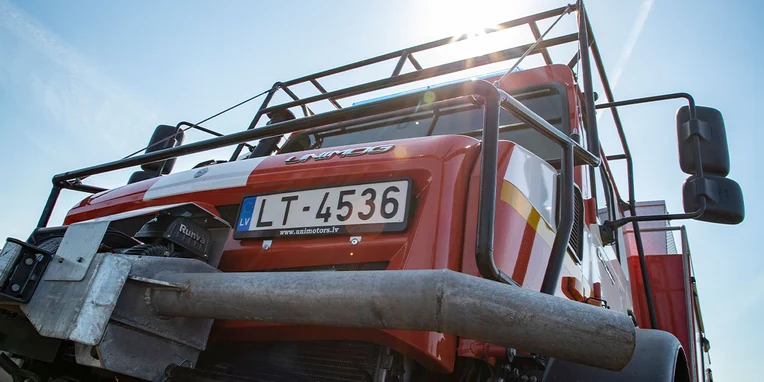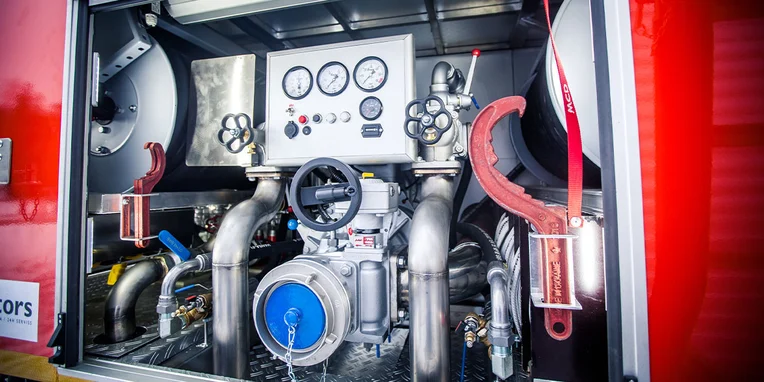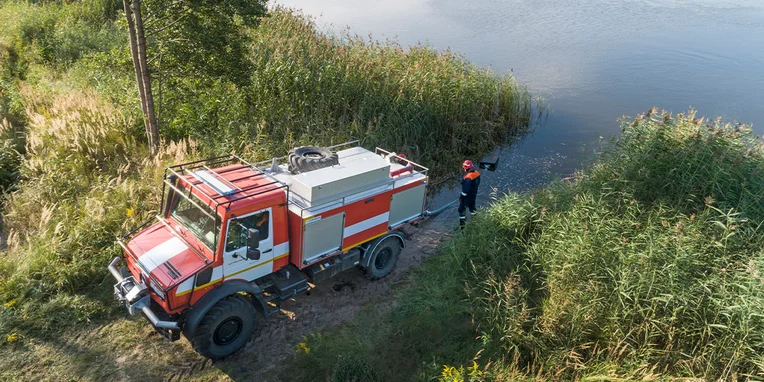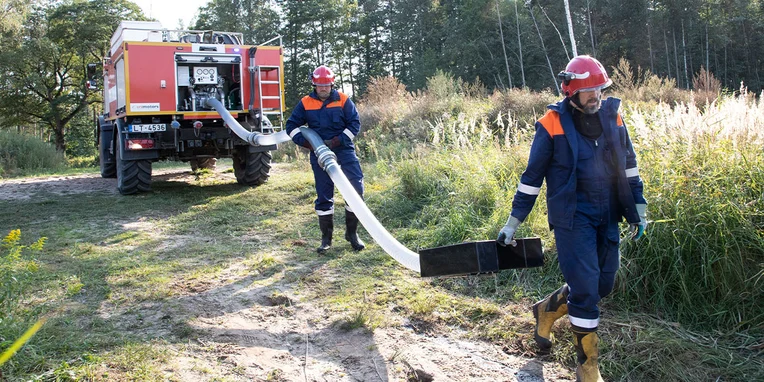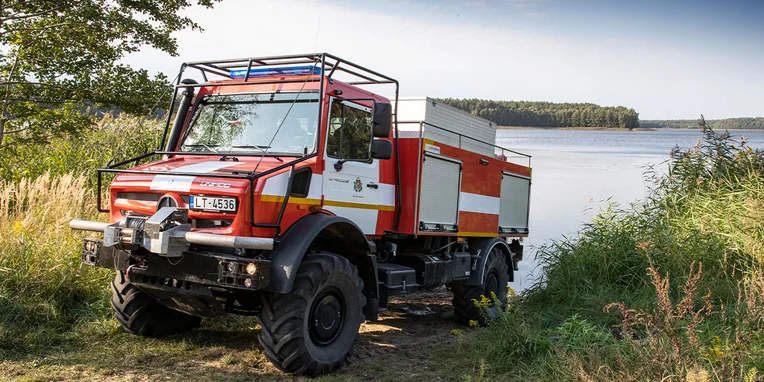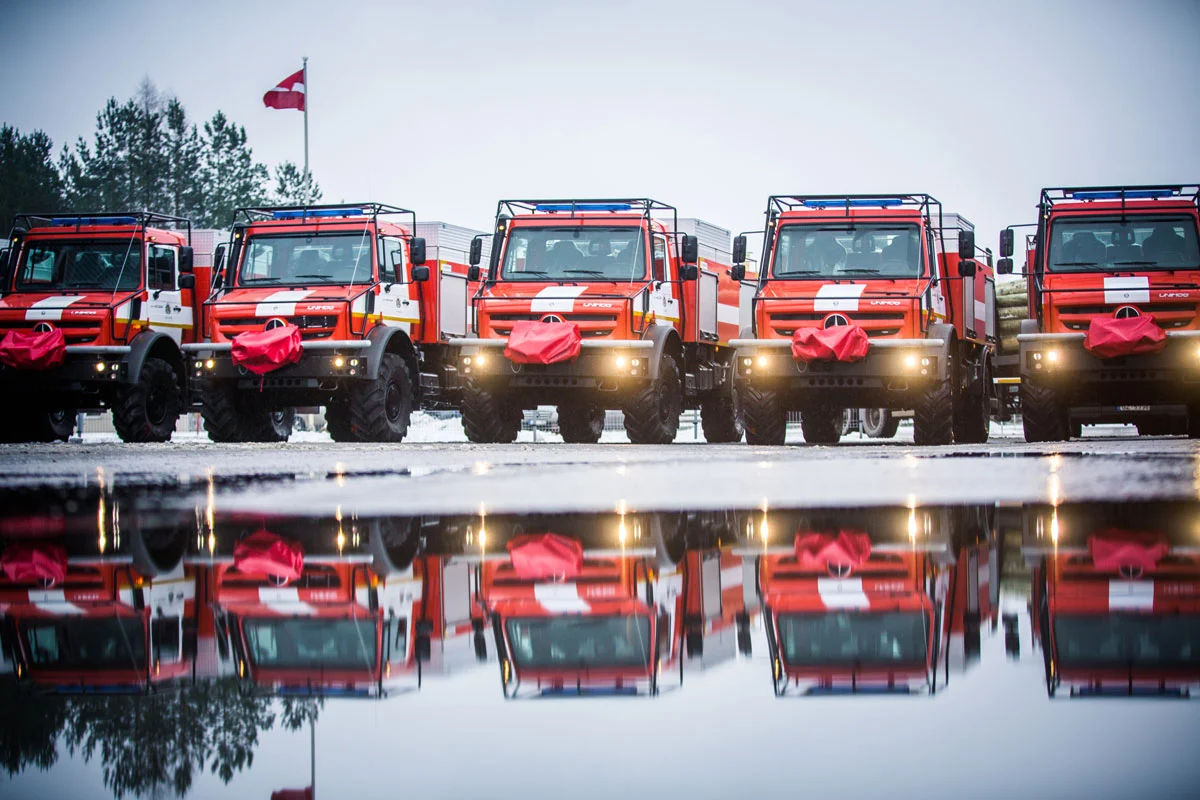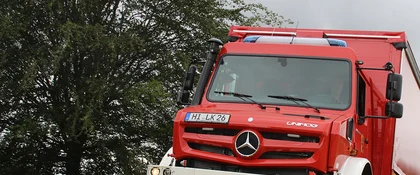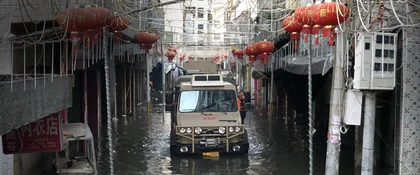The Unimog fighting fires in Latvia's forests.
2019 was a busy year for the world's firefighters – the world was literally in flames, and not just south of the equator but also at the Polar Circle: fires in the Arctic, fires in the Amazon rainforest, fires in the Australian bush and fires in Indonesia. Forest fires were raging pretty much everywhere. Even in central European countries such as Germany and Great Britain, or even in the Scandinavian states, large-scale fires were tearing through woodlands, in the process endangering both nature and humans alike.
With fires threatening to destroy vast areas of forests in Latvia and thus also one of the country's most important economic sectors – the wood industry – the Unimog U 4023 and Unimog U 4000 were sent to the frontline.
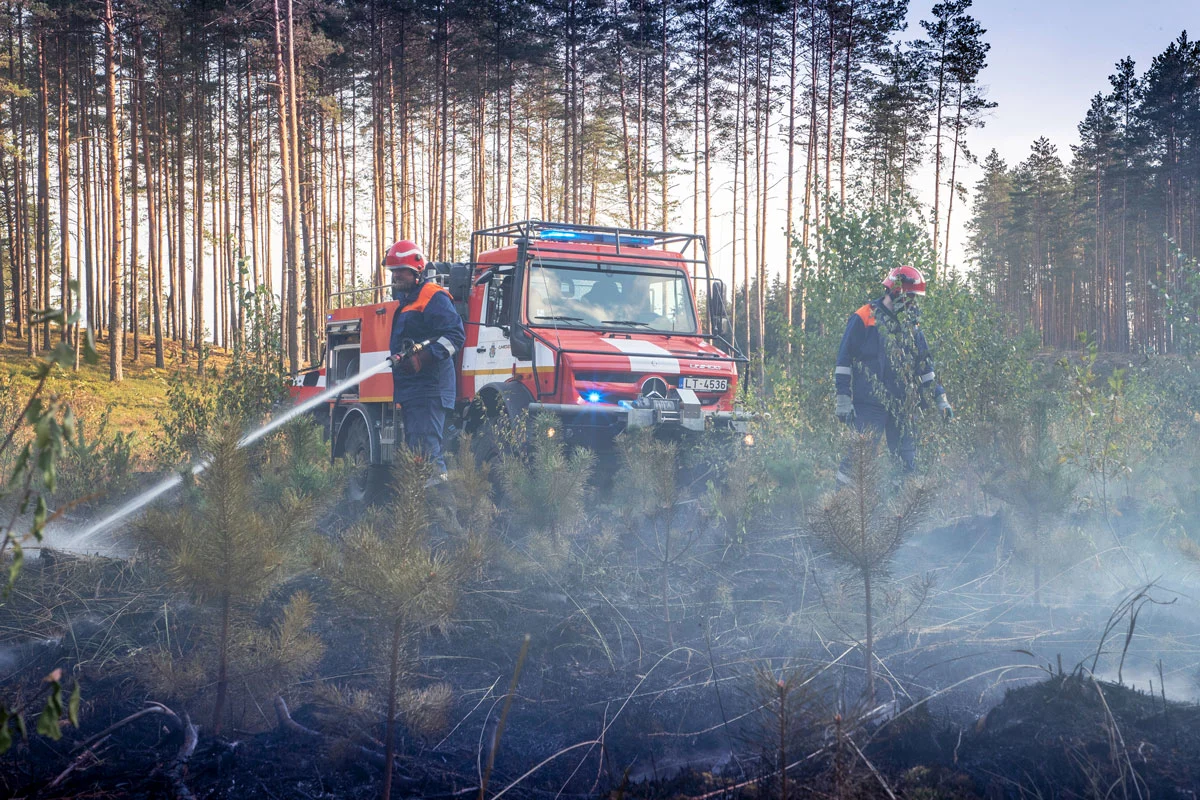
27 heroes on a mission for their country.
Wood and wood products are the most important export goods of Latvia. No surprise really, in view of the fact that around half of the country's surface area is covered by forests. And so it also goes without saying that the wood industry is traditionally among the country's strongest economic branches and also makes up for a large percentage of the country's workplaces. Large-scale forest fires therefore don't just endanger nature but also the country's industrial existence. Rather worryingly, just like in the rest of Europe, the summer of 2019 was hotter and drier in Latvia than in the previous year, itself also a bad year for fires.
But Latvia has suitably equipped itself to tackle such blazes: a total of 27 Unimog vehicles – 16 Unimog U 4000 extreme off-roaders and 11 Unimog U 4023 models – now form part of the fleet of Riga's Agriculture and Forestry Ministry. They form the backbone of the nation's forest firefighting capabilities.
